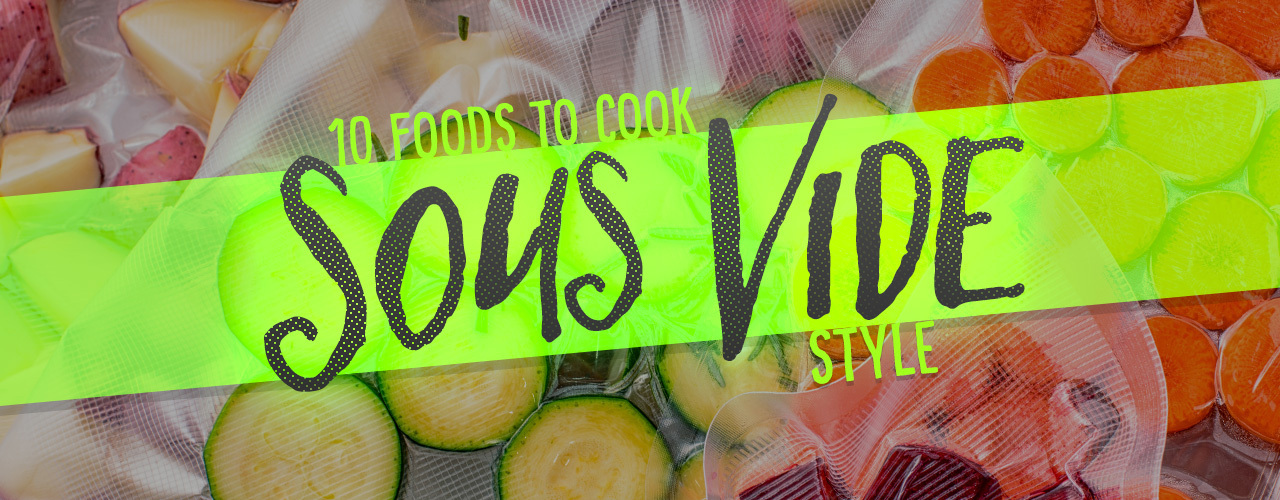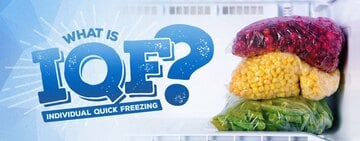While sous vide may seem like a high tech method of cooking, it's actually an effortless way to prepare a myriad of menu items including breakfast, sides, lunch, dinner, and even desserts. Since sous vide allows no moisture to escape the food, chefs and consumers often associate it with cooking meats like chicken and steak. But this French style of cooking can be used to create many more delicious dishes, including these 10 foods you may not have known you can cook sous vide.
Shop All Commercial Vacuum SealersHow Do You Cook Food Sous Vide?

Sous vide cooking involves placing food that’s been sealed in airtight containers or vacuum packaging bags in a warm, circulating water bath that heats up to, and remains at, a consistent temperature.
While this approach does involve owning some equipment that you may not already have in your kitchen, like a vacuum sealer and an immersion circulator, its benefits can outweigh the costs. The biggest benefit is that it is nearly impossible to overcook your food, so you can set it and forget it while you work on other items on your prep list.
Can You Sous Vide Cook All Proteins?
While you can technically cook all proteins sous vide, it is recommended you cook especially lean meats in a pan or in the oven. That’s because super lean meats release very little juices to begin with. And since sous vide stands out for its ability to cook proteins in their own juices, it is not an ideal cooking method for proteins such as liver or lean beef fillets.
Best Foods to Cook Sous Vide
Below are some non-traditional foods perfect for sous vide cooking. From breakfast to dessert, we’ve included a few popular foods you’ll want to try cooking right away.
Biscuits
Surprisingly, this breakfast staple can be baked in a sous vide circulator. Preparing biscuits sous vide creates an irresistibly moist product, especially when compared to traditional baking methods. This innovative cooking approach is typically done using plastic bags, but can also be prepared in canning jars.
French Fries
Gone are the days of soggy fast food fries, because these sous vide french fries offer up a delicious, crispy outside and fluffy inside. This is done by cooking fries sous vide in brine before sending them into the fryer. While the fryer creates the crisp outer skin, cooking potatoes sous vide style gives them a smooth and fluffy inside.
Eggs
Every guest prefers their eggs cooked in a different way. You can cook eggs with sous vide and quickly prepare scrambled and poached eggs at the same time in your diner or restaurant. Or, easily create sous vide hard-boiled eggs to incorporate into egg salad sandwiches or cobb salads. Best of all, since you don’t have to focus on your eggs after you’ve placed them in your circulator, you won’t have to spend time monitoring them.
Sausage
Sausage is especially susceptible to becoming burnt on the outside and undercooked on the inside. Preparing sous vide breakfast sausage, or hearty sweet Italian sausage at lunchtime, you’ll be able to create a juicy piece of sausage that is both fully cooked and not burnt. While sous vide produces moist, delicious sausage on its own, you can always finish it off on the grill to give it visually pleasing grill marks.
Corn
If you think about it, cooking corn sous vide isn’t much of a stretch, considering it’s typically prepared in boiling water anyway. But unlike boiling or steaming, cooking corn sous vide doesn't place this veggie in direct contact with water, so its nutrients and delicious flavors are retained. This approach also allows you to pack multiple ears into just one vacuum packaging bag, making it easier to prepare more at one time. Plus, cooking sous vide corn allows you to include butter and aromatics in the vacuum sealed bag for a burst of flavor.
Creme Brulee

Sous vide food doesn’t stop at dinner. This cooking method lends itself nicely to creating the perfect creme brulee. Because sous vide makes it nearly impossible to over or undercook, you can produce flawless creme brulee each time you cook it. Simply top off your classic dessert with the broiler or a butane torch, and guests will never know you didn’t cook it in the oven.
Salmon
Salmon can be tricky to cook, which has led many chefs to over or undercooking this popular fish. Because sous vide cooking eliminates these risks, you’re left with perfectly juicy, flaky salmon that retains its mouthwatering pink color even after cooking. And since the moisture is locked into the vacuum packaging bag, your salmon won't lose any of its size.
Flavored Oils
Flavor-infused oils can be a costly, specialized item to stock in your commercial kitchen. Instead, you can use sous vide style cooking for creating delicious savory or sweet marinades for your signature entrees and sides. Unlike traditional methods, sous vide flavored oils only take a couple hours to produce.
Yogurt

House-made yogurt can set your coffee shop or cafe apart from the competition. Creating sous vide yogurt requires only a few ingredients and can be customized to your own preferences. Add a few herbs and spices to create a savory topping for lamb or grilled chicken. Or, incorporate jams and sweeteners into your sous vide yogurt recipe to serve in fruit parfaits.
Carrots
Similar to corn, carrots are another vegetable that loses most of their flavor and nutrients when cooked directly in water. But, when prepared sous vide style, the carrot cells don’t break down, so all of the flavor stays in the carrot. Incorporate classic seasonings to create delicious dishes such as honey-glazed carrots.
While sous vide equipment can be expensive, it has the ability to produce mouthwatering, moist dishes. Plus, because you simply drop your prepared food into a water bath, this method of cooking allows your chefs to focus on other kitchen tasks. Whether you're already a master at creating the perfect sous vide brunch and dinner or you're just ordering your first machine, this approach to cooking is sure to help you consistently create your delicious signature meals and sides.



